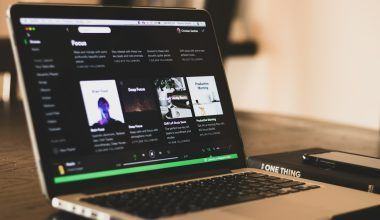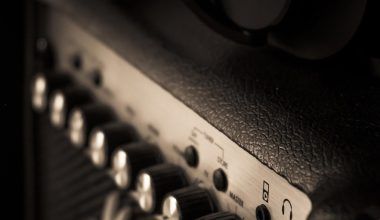Let’s Start with the Basics!
Have you ever wondered: is mono audio better than stereo? The answer is not as complicated as it might seem. To make things super simple, let’s think of mono audio as a single path where all sounds come together, while stereo audio creates two separate paths for sound—one for the left ear and one for the right.
Before we dive deep into the pros and cons, let’s understand what mono audio really is, where it’s useful, and how it compares to stereo. Whether you’re a musician, podcaster, or someone who loves listening to music, this guide will give you all the answers.
What is Mono Audio?
Mono, short for “monophonic,” means all sounds are mixed together into one single channel. This channel is played back through one speaker—or multiple speakers—but the sound remains the same no matter where you listen.
In simpler terms:
- Mono audio is like a single voice in a room.
- Everyone hears the same thing, no matter where they’re sitting.
For example:
- A phone call you hear through a single earpiece is often mono.
- Most public announcements, like in airports or stadiums, use mono audio so everyone hears the same message clearly.
What is Stereo Audio?
Now, let’s look at stereo audio, which is like a conversation where two people speak from different directions. Stereo splits the audio into two separate channels:
- One for the left speaker.
- One for the right speaker.
This creates a more “real” experience, making you feel like you’re inside the music or action.
For example:
- When you listen to a stereo track, the drums might come from the left and the guitar from the right.
- Watching a movie in stereo means you can hear cars zooming from one side of the screen to the other.
Mono vs. Stereo: What’s the Key Difference?
Here’s the simplest way to understand:
- Mono Audio: All sounds combine into one single track.
- Stereo Audio: Sounds are split into left and right channels for a richer experience.
Imagine a football game:
- With mono, you hear everything evenly—cheers, whistles, and commentary sound the same wherever you sit.
- With stereo, you might hear the cheering crowd from one side and the commentator’s voice from the other.
Is Mono Audio Better? It Depends!
The big question is: is mono audio better? The answer isn’t a simple yes or no. It depends on what you’re using it for. Let’s break it down with real-life examples.
When Mono Audio is Better:
- Podcasts and Audiobooks:
- Most podcasts are in mono. Why? Because the listener needs clear, balanced sound no matter what headphones or speakers they’re using.
- Live Events:
- In large events like concerts or rallies, mono ensures everyone hears the same thing, whether they’re in the front row or at the back.
- Music on Mono Speakers:
- Many small Bluetooth speakers and phones merge stereo into mono anyway. So, if you know your music will be played on such devices, mono might be a better choice.
When Stereo Audio is Better:
- Music Production:
- Stereo adds depth and detail, letting listeners hear instruments from different directions.
- Movies and Games:
- Stereo enhances the experience by making you feel like you’re part of the scene. For example, you can hear footsteps getting closer or an explosion happening behind you.
Pros and Cons of Mono Audio
Why Mono Audio Can Be Great:
- Clarity: Mono ensures everyone hears the same thing clearly.
- Simplicity: It’s easier to produce and doesn’t require fancy equipment.
- Universal Compatibility: Mono works on all devices, whether it’s an old speaker or a modern smartphone.
Why Mono Isn’t Always Ideal:
- Flat Sound: Mono lacks the dynamic feel that stereo provides.
- No Directionality: You can’t tell where sounds are coming from, which can make music or movies less engaging.
When Should You Use Mono Audio?
To make things easy, here’s a quick list of when mono audio works best:
- Podcasts or Voice Recordings:
- Mono is perfect for voices because it sounds the same on any device.
- Public Announcements:
- In places like train stations or stadiums, mono ensures everyone hears the message clearly.
- Old-School Music:
- Some vintage tracks sound better in mono because that’s how they were originally recorded.
Does Mono Audio Work for Music?
If you’re an artist, you might ask: is mono audio better for my music? Well, it depends on the style of music you create.
- Mono is great for:
- Lo-fi music or retro tracks that don’t rely on spatial effects.
- Music meant for small speakers or radios.
- Stereo is better for:
- Modern genres like pop, EDM, or rock, where listeners expect a rich, immersive experience.
Mono vs. Stereo in Everyday Life
Let’s look at some real-world examples:
| Scenario | Use Mono | Use Stereo |
|---|---|---|
| Podcasts or Audiobooks | ✅ | |
| Live Sound at Events | ✅ | |
| Recording Music | ✅ | |
| Watching Movies | ✅ | |
| Listening on Phones | ✅ |
Converting Stereo to Mono: A Simple Guide
Sometimes, you may need to convert stereo audio to mono. It’s easy! Here’s how you can do it:
- Use free software like Audacity.
- Import your stereo track.
- Split the stereo track into two channels (left and right).
- Merge both channels into one mono track.
- Save and export your file as mono audio.
This method ensures you get clear, consistent sound without losing quality.
Why Mono Audio Still Matters
Even in today’s stereo-dominated world, mono audio hasn’t become obsolete. In fact, it’s still widely used in:
- Broadcast Radio: Ensures clear sound across all devices.
- Public Spaces: Delivers consistent sound to large audiences.
- Vintage Music: Preserves the charm of old-school tracks.
A Human Perspective: What Should You Choose?
Think of mono and stereo like two tools in a toolbox. Mono is like a reliable hammer—simple and effective. Stereo is like a precision drill—it’s detailed and fancy but not always necessary.
Ask yourself:
- Are you creating something simple like a podcast? Go mono.
- Are you making music or videos that need depth? Choose stereo.
At the end of the day, it’s all about what works best for your specific needs.
Final Thoughts: Is Mono Audio Better?
So, is mono audio better? The truth is, it depends on what you’re trying to achieve. Mono audio is perfect for simplicity and clarity, while stereo shines when you need detail and immersion.
Remember, the goal is to make your audience enjoy the experience. Whether you choose mono or stereo, it’s the quality of your content that truly matters.
Related Articles:
For further reading, explore these related articles:
- The Ultimate Guide to Choosing the Best Microphone for Recording Vocals
- Unlock the Secret to Earn Money with Music
- The Ultimate Guide to Choosing the Best Sound Quality Format
For additional resources on music marketing and distribution, visit Deliver My Tune.






